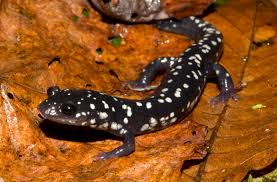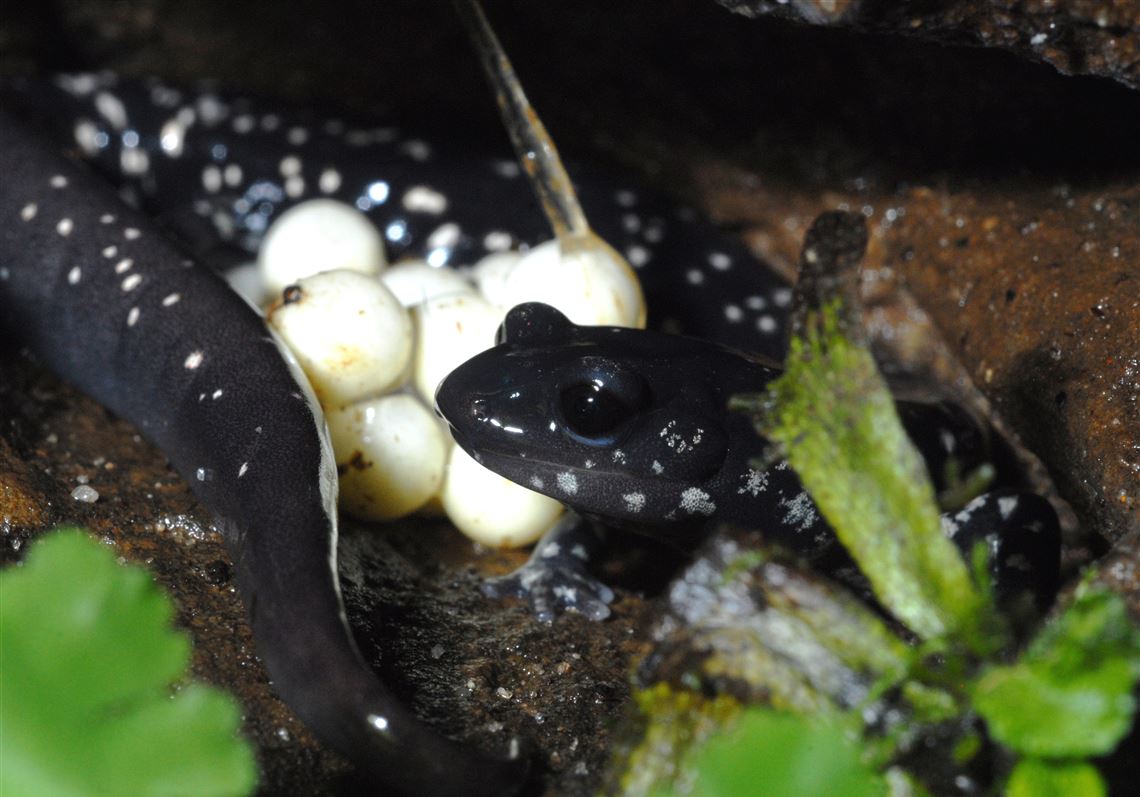Northern Slimy Salamander
General Description

The Northern Slimy Salamander (Plethodon glutinosus) is a member of the "lungless" salamander family (Plethodontidae) known for its dark black or bluish-black body that is covered with white or silver spots scattered along its back and side. These salamanders range in size between 12 to 17 centimeters and have an average lifespan of around 5 years. Along with the tail to be cylindrical shape to distinguish the species between blue-spotted salamanders and Jefferson salamanders [1] [2] [5].
Habitat
Northern Slimy Salamanders are found in old growth forests in moist environments such as under rocks, logs, and leaf litter. They prefer areas that have consistent moisture and to be covered, generally found near hillsides or streams. [2] [1]. The salamanders move about underground using insect and animal burrows. [3] Geographically northern slimy salamanders are found within the eastern and central United States [1][5].
Diet
The diet of the Northern Slimy Salamanders consist of mainly ants, beetles, sowbugs, and earthworms [3]. They typically hunt at night by relying on their sense of smell. The salamanders contribute to the environment in this way by controlling the insect populations within the forests ecosystems [1].
Reproduction

The Northern Slimy Salamanders mating consists of courtship dances from males. Prior to the courtship dance the chin, feet, and white pots on the males will turn pink and then later a bright shade of red. Breeding between them occurs during the late spring time. Eggs can be deposited from that time till late summer. Eggs are laid in moist areas. The eggs hatch around 3 months after deposited. Juveniles have no aquatic stage and head straight for adulthood meaning the species is completely terrestrial. Females do not mature sexually until two years old, but can not lay eggs until three years old. The same goes with males breeding [3].
Defense
When the salamanders are threatened, they will lash out their tail and secret a sticky glue substance. This is where the salamanders get their name from. If humans were to touch the salamanders it is difficult to remove from clothes and hands but for animals it creates a jaw binding affect. This means that if the predator gets the substance stuck in their mouth it prevents their ability to chew or swallow [2].
References
[1] Northern slimy salamander. 2025, February 14. https://www.nationalzoo.si.edu/animals/northern-slimy-salamander.
[2] Northern Slimy Salamander. (n.d.). https://portal.ct.gov/DEEP/Wildlife/Fact-Sheets/Northern-Slimy-Salamander.
[3] Yung, J. (n.d.). Plethodon glutinosus (Northern Slimy Salamander). https://animaldiversity.org/accounts/Plethodon_glutinosus/.
[4] Humble creatures in the spotlight at Toledo Zoo. 2009, August 31. https://www.toledoblade.com/local/2009/08/31/Humble-creatures-in-the-spotlight-at-Toledo-Zoo/stories/200908310012.
[5] Phillips, Christopher A., et al. “Northern Slimy Salamander: Plethodon Glutinosus (Green, 1818).” Field Guide to Amphibians and Reptiles of Illinois, University of Illinois Press, 2022, pp. 90-.